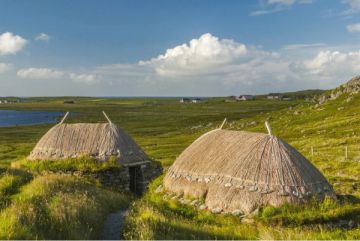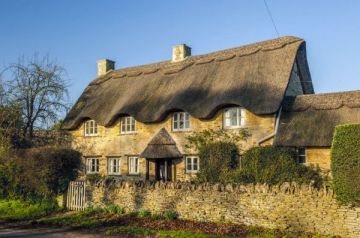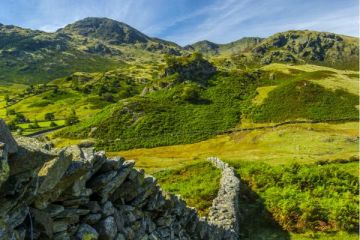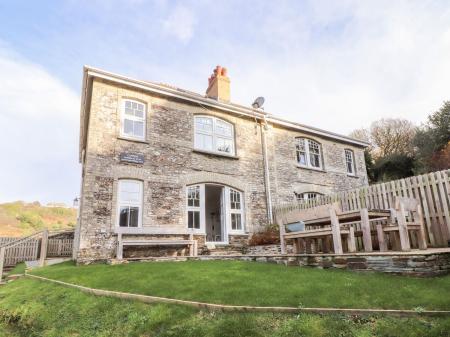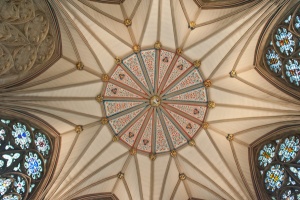
This area of England coincides roughly with the modern counties of Yorkshire and Northumberland. In the Dark Ages, Yorkshire was ruled by the Vikings, and that Norse heritage is celebrated in numerous festivals and museums. The Jorvik Viking Centre in York is an excellent place to begin exploring the culture of that rough-and-tumble time.
York is also home to York Minster, arguably the second most impressive English church after Westminster Abbey. The Minster is especially known for its superb north windows, the "Five Sisters". The delicate Chapter House, where the day to day business of the Minster was run, was begun in about 1260. It is a superb example of the Gothic Decorated style which was then in vogue.
One of the great pleasures of visiting York is a stroll along the well-preserved medieval city walls, where the Roman foundations can still be seen in places. The Shambles lays claim to being the narrowest street in England, and was the medieval equivalent of a shopping mall.

For many visitors today, York is a jumping-off point for a leisurely trip through "Herriot Country", the small villages and meandering lanes that split the Yorkshire Dales made famous in the stories of James Herriot. You can visit many of the places that feature in the books and television series which followed.
Moving from dales to moors, the North York Moors National Park is a high plateau at its scenic best in August and September, when the purple heather is in bloom. The Cleveland Way National Trail hugs the rim of the moor, and a trip along it provides excellent views. Along the coast, old smuggling villages like Robin Hood's Bay, cling to the rugged cliffs.
Within the park is Rievaulx Abbey, once the largest and most important monastery in England. Rievaulx (the Norman pronunciation of "Rye Vallis") is an excellent example of Early English Gothic, set in beautiful woodlands.
Even more popular than Rievaulx is Fountains Abbey, near Ripon, where extensive remains of a 12th-century Cistercian abbey are located on the outskirts of the Studley Royal estate. Named after the many springs in the area, Fountains grew to become one of the largest and richest houses in Britain before it was put down in the Dissolution of the Monasteries.

Fountains Abbey is a World Heritage site, as is Durham Cathedral, one of the earliest examples of the Gothic style in English architecture. The church is perched above a bend of the River Wear and ringed below with trees. It was founded in AD 995 as a final resting place for the remains of Saint Cuthbert, which had been carted about for over a century since they were removed from Lindisfarne Priory and the threat of the Danes.
Northumbria shares anther World Heritage site with Cumbria. That site is Hadrian's Wall, the extraordinary barrier erected in the 2nd century by the Roman Emperor Hadrian to keep the unruly tribes of Scotland from causing trouble in the Roman provinces of the south. Hadrian's Wall follows the natural contours of hills and ridges from the outskirts of Newcastle to just past Carlisle. Several of the mile forts (erected ... yes, every mile) and larger Roman military camps can be visited today. The best-preserved camp is probably Housesteads.
Alnwick Castle has been the seat of the powerful Percy family, Dukes of Northumberland, since the 14th century. The castle is built in a lovely setting, with a restored interior replete with fine paintings, furniture, and a superb collection of porcelain. The state rooms are approached by a huge staircase of polished Carrara marble, each tread a solid piece of stone 12 feet in length!






